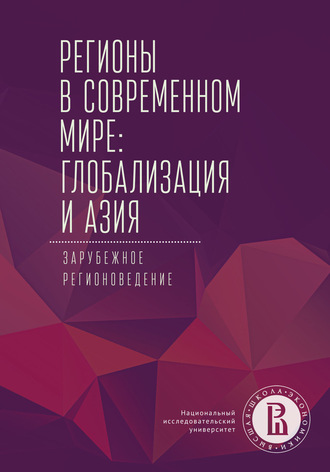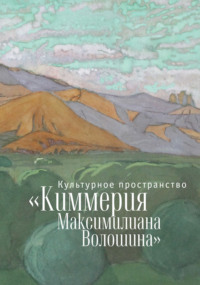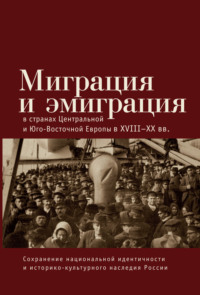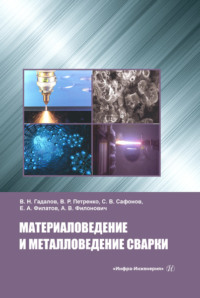
Полная версия
Регионы в современном мире: глобализация и Азия. Зарубежное регионоведение
China is an old ally of Iran and has vested interests, along with Russia, in Iran’s oil and gas industry. China is financing the upgrading of the Tehran-Mashhad railway along with China’s Exim Bank lending US$1.5 billion for the lines electrification. The track of 2,300 km line will eventually link Urumqi, the capital of China’s western Xinjiang Province, to the Iranian capital Tehran, connecting Kazakhstan, Kyrgyzstan, Uzbekistan and Turkmenistan along the way25.
The proposed railway project is supposed to run from Tehran and join Iran’s east-west network leading west to Turkey and Eastern Europe. It is also expected to open a way to Europe by a developing rail route from the southern Iranian ports to Azerbaijan and Europe. Further linking with the Iran’s North-South Transport Corridor, this runs from Chabahar Port north to Azerbaijan. Towards the east, this links up with the also Chinese funded, low key Lapis Lazuli Corridor.
The rail project will extend from Tehran into Turkey and across the borders with the European Union. Additionally, Turkey is also being linked with rail freight lines running north through China and across Kazakhstan, to Baku in Azerbaijan. The Baku-Tbilisi-Kars Railway provides a direct link to Europe from China, via Turkey as it connects through a cross-Turkey. A high-speed rail service is being constructed by China, connecting Kars with Edirne, near Turkey’s border with Bulgaria and Greece. Bilateral trade between Turkey and China was recorded at US$26.3 billion in 2017. Turkey’s export to China was around US$3 billion while its imports from China exceeded US$23 billion.
China has extensively invested in Syria for developmental purpose. According to Ellis, this is «an opportunistic and geopolitical play; opportunistic as Chinese contractors are looking at reconstruction projects to rebuild the country after its devastating civil war, and geo-political as China recognizes that Syria can provide an alternative route to Europe than the Suez Canal»26. This region is being developed by the Chinese with a Special Economic Zone which is being built in Tripoli Port, and plans to rebuild the Tripoli-Homs Railway. The zone provides Chinese and other regional businesses with low tax options for consolidating and adding value to component parts sourced elsewhere to then be exported to Syria. As per the estimate of the United Nations, it will coast around US$250 billion to rebuild the region. As Syria is oil rich region, China can initiate with the infrastructure building and in return secure energy supplies. Meanwhile, develop a secondary route to the Mediterranean and southern Europe.
China is a big investor in Israel and has plenty of opportunity in the market, in the fields including real estate, transportation, energy, telecommunications, and other infrastructure requirements. Its ports and trade routes to the Middle East make it a major gateway to Europe for the Middle East, which is beneficial for China. Projects in Saudi Arabia, and the other Arabian states include gas pipelines, to meet Chinese demand and also a better consistent energy network across the region.
In 2018 President Xi visited Saudi Arabia, Egypt, and Iran27, and released its first Arab Policy Paper to signal its intention of increased engagement in the Mideast. The paper outlined the “1+2+3” cooperation framework28. China is also trying to balance ties with Riyadh and Tehran, in March Beijing signed $65 billion worth of deals with Riyadh and aims to coordinate OBOR projects with Saudi Vision 2030, while in June China backed Iran’s admission to the China-led Shanghai Cooperation Organization (SCO) and recently extended a $10 billion credit line for infrastructure projects. Iran is an important node of the OBOR by virtue of its geography linking Central Asia with South and West Asia, while Saudi Arabia is a leader of the Gulf Cooperation Council (GCC) and also a key oil supplier29. With a planned Tripoli Special Economic Zone adjacent to the port, Tripoli could be a useful hub for Syria and enable China via the OBOR to play a constructive role in post-conflict reconstruction and stabilization efforts.
Conclusion
Hence, the study concludes that the ongoing regional security problems including terrorism, economic woes, and a need for immediate infrastructure, investment and trade, the OBOR initiative offers a quick economic aid. As China is becoming a more significant geopolitical actor in the Middle East, gradually the regional countries will become more dependent on Beijing for their trade and investment relations. China’s increasing economic soft power will in turn ease their dependency on the West and broaden their foreign policy options that may not always align with the United States and European Union interests. This would also reduce Western control over the region, additionally it increases regional countries’ freedom of action to diversify and engage with more economic partners. It would be beneficial if great powers including the Unites States, European Union, China, India, Russia and others also try to cooperate to jointly promote Middle East stability, security and prosperity.
References
Aneja A. China reaches out to West Asia, The Hindu, 23 March 2017. (in English)
Awasthi S. China-led BRI and its Impact on India with Specific Reference to CPEC // Journal of International Affairs, 2018, Vol 2 No 1. P. 97–110. (in English)
Ehteshami A. and Horesh N. China’s Presence in the Middle East: The Implications of the One Belt, One Road Initiative, 2019, Routledge. (in English)
Frans-Paul van der Putten et al eds. The Geopolitical Relevance of Piraeus and China’s New Silk Road for Southeast Europe and Turkey, Clingendael Report, 2016. P. 27. (in English)
Johny S. China’s long game in West Asia // The Hindu, 29 January 2016. (in English)
Lin C., The Belt and Road and China’s Long-term Visions in the Middle East, ISPSW Strategy Series: Focus on Defense and International Security, 2017. Vol. 512. P. 1–10. (in English)
Macaes B. Belt and Road: A Chinese World Order. Penguin Viking, 2019. 288 р. (in English)
Olimat M. China and the Middle East from Silk Road to Arab Spring, Routledge, 2015. 240 р. (in English)
Sevilla H. China’s New Silk Route Initiative: Political and Economic Implications for the Middle East and Southeast Asia, 2017, Asian Journal of Middle Eastern and Islamic Studies Volume 11, Issue 1. P. 83–106. (in English)
Shichor Y. Gains and Losses: Historical Lessons of China’s Middle East Policy for Its OBOR Initiative, Asian Journal of Middle Eastern and Islamic Studies, 2018, Vol. 12 Issue 2. P. 127–141. (in English)
Значение Китайского проекта «Один пояс – один путь» для российской экономики
Китайский масштабный проект «Один пояс, один путь», анонсированный в 2013 году, представляет значительный интерес для России. Учитывая санкции, введенные западными странами, и дальнейшее укрепление торгово-экономических и политических отношений со странами Азиатско-Тихоокеанского региона, Россия и Китай укрепляют сотрудничество в рамках данной инициативы. Особенно актуальным и острым в связи с расхождением целей и интересов китайской и российской сторон является вопрос сопряжения проекта «Один пояс, один путь» и Евразийского экономического союза. Как показывает шестилетний опыт реализации инициативы «Один пояс, один путь», реализация проекта идет не гладко и вызывает многочисленные нарекания в адрес Китая из-за навязывания интересов и условий кабалы другим странам, коррупционной составляющей проекта и его непрозрачности. Таким образом, отношение к проекту неоднозначное, и в этих условиях важно выстраивать отношения между Россией и Китаем оптимальным образом для взаимовыгодного сотрудничества. Целью исследования является анализ влияния китайского проекта «Один пояс, один путь» на российскую экономику. Предметом исследования является китайский проект «Один пояс, один путь». Автор приходит к выводу, что в настоящее время российское участие в проекте «Один пояс, один путь» имеет в основном потенциальные преимущества и возможности, а реальные результаты для российской экономики весьма незначительны.
Ключевые слова: Китай, экономика, Евразийский экономический союз, «Один пояс, один путь», Россия.
THE IMPORTANCE OF THE CHINESE PROJECT “ONE BELT – ONE ROAD” FOR THE RUSSIAN ECONOMYDAVYDENKO ELIZAVETA VASILEVNAAssociate Professor, The department of international entrepreneurship St. Petersburg State university of aerospace instrumentationdavvas@mail.ruThe Chinese large – scale project «One belt – one road» announced in 2013, is of significant interest to Russia. Taking into account the sanctions imposed by Western countries and the further strengthening of trade, economic and political relations with the countries of the Asia-Pacific region, Russia and China are strengthening cooperation within the framework of this initiative. Particularly relevant and acute due to the divergence of goals and interests of the Chinese and Russian sides is a question of interface of the project «One belt – one road» and the Eurasian Economic Union. As the six years’ experience of the «One belt – one road» initiative shows, the implementation of the «One belt – one road» project does not go smoothly and causes numerous criticism of China in imposing interests and conditions of bondage to other countries, the corruption component of the project and its opacity. Thus, the attitude to the project is ambiguous, and in these conditions, it is important to build relations between Russia and China in an optimal way for mutually beneficial cooperation. The aim of the study is to analyze the impact of the Chinese project «One belt – one road» on the Russian economy. The subject of the study is the Chinese project «One belt – one road». The author comes to the conclusion that at present the Russian participation in the project “One belt has mainly potential advantages and possibilities and real results for the Russian economy are very insignificant.
Keywords: China, economy, Eurasian Economic Union, «One belt – one road», Russia.
Introduction
The importance of studying the impact of the Chinese project «One belt – one road» on the Russian economy is beyond doubt. The Chinese project is an open initiative and any country can join it. The project has a huge multiplier effect and is very attractive not only for China, but also for other countries. One of the active participants of the concept of «One belt – one road» is Russia. Nowadays Russia and China are strengthening economic and political cooperation within the framework of this initiative. This article will analyze the impact of the Chinese mega project «One belt – one road» on the Russian economy, highlight its advantages and disadvantages.
Methodology
In the course of the study the author identifying the advantages and disadvantages of the influence of the Chinese project «One belt – one road» on the Russian economy, used a comparative method, analysis and synthesis. The research is based on the materials of Russian and foreign experts and scientists.
Main results
The Chinese project «One belt – one road», combining the «Silk Road Economic belt» and the «Maritime silk road of the XXI century», was first proposed by the President of China – Xi Jinping in 2013. This project is a key element of the general Chinese policy and is aimed at the strengthening China’s position in the international arena, solving China’s domestic economic problems and strengthening regional integration.
This project will lead to significant transformations in the Eurasian space, in particular in the transport and logistics sectors. The project involves the development of cooperation between the countries in five key areas: infrastructure cooperation, political coordination, the growth of mutual trade, strengthening of spiritual unity and free movement of capital30.
According to the project, it is expected that there will be three main routes of the Economic belt: North – from China through Central Asia and Russia to the Europe, Central – from China through the Central and West Asia to the Persian Gulf and the Mediterranean Sea, South – from China to the Southeast and South Asia to the Indian Ocean. Within these areas it is planned to create international corridors: China-Mongolia-Russia, China-Central Asia-West Asia, China-Indochina, China-Pakistan, Bangladesh-India-Myanmar-China.
The Chinese project is an open initiative and any country can join it. In 2019 China has already signed 173 agreements according to the participation in the project with 125 countries and 29 international organizations. It is interesting that over 60 countries joined the project only in 2018. The project has been so deeply integrated into China’s foreign policy that it was mentioned in the Charter of the Communist party of China in 201731.
The scale of the project «One belt – one road» is enormous from the different points of view. For persuasiveness we can give some statistics. Morgan Stanley estimates that by 2027 the project will cost approximately $1.3 trillion. The Chinese banks and financial institutions, mostly state-owned, have invested more than $90 billion in this project. The reason is this project is widely supported by the Chinese government. China’s partners have invested more than $ 40 billion in the Chinese economy. The volume of trade between China and «One belt – one road» participants, which exceeded $6 trillion, is impressive. The trade with project partners increases by an average of 4% per year. Over the six years of the project’s existence it accounted for 27.4% of the Chinese trade in whole32. So, the project has a huge multiplier effect and is very attractive, not only for China, but also for other countries.
One of the active participants of the concept of «One belt – one road» is Russia, supporting it from the very beginning of the project. It is necessary to mention that at present the economic relations between China and Russia are developing very dynamically and positively. The impulse for strengthening cooperation between our countries can be considered the introduction by Western countries sanctions in 2014 against Russia and a turn of Russian foreign economic and political strategy towards the Asia-Pacific region, in particular China.
For optimal cooperation between Russia and China it is important to combine the mutual interests of both countries. The interests of the Russian Federation are related to the deepening of strategic partnership with China, in particular within the framework of the Eurasian economic Union [Efremenko, 2018. P. 48]. China relies on further rapprochement with Russia to ensure stability in the North and a strong strategic rear, investment, trade and economic energy cooperation.
On the 8th May 2015 as part of the institutionalization of cooperation Russia and China signed a Declaration on the interconnection of the Eurasian economic Union and the Silk Road Economic belt. The Declaration identified key directions of contact: investments in industrial cooperation, a development of a common logistics system, a harmonization of foreign trade legislation, a strengthening of the role of joint financial institutions and expansion of foreign exchange cooperation in the field of foreign trade. In 2016 the Memorandum according to the coordination of joint efforts to promote economic and investment cooperation in various international platforms was signed.
In May 2018 another agreement on cooperation in the economic sphere between the Eurasian economic Union and China on trade policy, technical regulation, phytosanitary control was signed. The harmonization of norms and removal of restrictions will certainly give impulse to the development of cooperation. On the 17th October 2018 during the meeting in Beijing it was proposed to accelerate the pairing of projects within the framework of the «One belt initiative”33 [Efremenko D. 2018]. This idea was also discussed at the fifth Eastern economic forum in 201934. Thus due to the active political support and stimulation of joint projects there is a significant institutionalization of cooperation between the Eurasian economic Union, the Silk Road Economic belt, the Russian Federation and China [The strategy of «The Economic belt of the silk road» and the role of the Shanghai cooperation organization, 2016. P. 16].
The interaction between the Eurasian economic Union and the «One belt – one road» initiative is primarily considered from the point of view of the development of logistics infrastructure and the creation of transport corridors. The Eurasian economic Union has proposed 38 projects for joint financing with China, including 11 Russian projects35. Thanks to the support of China the construction and development of transport routes connecting Western China and Western Europe and the Northern Sea route are planned.
The implementation of these projects is perfect for China because it will reduce the speed of delivery of goods to the European market (which is especially important because a daily trade volume of China – EU is 1.5 billion euro) and to Russia, as it will help to develop national production and export potential. As to the Russia the transit potential of the TRANS-Siberian railway is not fully used and a participation in the Chinese project will strengthen its role. The most important infrastructure project of fundamental importance for economic partnership between Russia and China is a construction of a railway bridge over the Amur River. The financial operator of this project is the Russian-Chinese investment Fund, formed By the Russian direct investment Fund and China Investment Corporation.
According to the opinion of some experts, the increase in the supply of goods, including transit through the Russian Federation by the help of land transport on the route China-Europe is real, if infrastructure capabilities and increase capacity will be increased. The experts also note two problems. The first one is an imbalance of under loading of trains when they return. The other problem is investment. The participants of the new Silk Road, who take part in the project as transit points, are still afraid to invest in the project, so the main financial burden falls on China. The China’s participation in the Russian projects can be regarded as a «political investment». Despite the loud statements of politicians of the two countries the real results of cooperation between China and Russia in the framework of the project are very modest.
Among project consequences for Russia we can note the following. The participation in the project “One belt – one road” can lead to the integration of the Russian transport system into the transport and logistics network of the Eurasian region, which will open up opportunities for transit and provision of related logistics services and access to the markets of the region36.
Of particular importance within the framework of the project is an interaction of our countries in the field of modernization of poorly developed regions of Siberia and the Far East, which need modern infrastructure and investment. As a concern, we can note a decrease of interest in the TRANS-Siberian and Far Eastern directions. The fact is that the route through Kazakhstan is beneficial for China both in terms of tariff rates and time. At present 10 of the 14 routes China–Russia are passing through Kazakhstan37.
The second advantage is a strengthening of industrial cooperation between the countries, the possibility of forming production clusters. The third plus of the Russian participation in the project “One belt – one road” is a possibility of pairing the Eurasian economic Union and the «One belt – one road» and turning it into a new center of economic and political development at the global level. However, it is worth noting that China is mainly focused on the development of the bilateral relations with each member of the Union individually.
Lately China is accused of opacity and often enslaving terms of agreements, unfair choice of contractors, failure to meet deadlines, untimely provision of promised loans, construction of «white elephants», and damage to the environment. Thus, according to China Global Energy Finance database in 2018 the share of «coal» projects in the project “One belt – one road” was 42%38.
Beijing is also accused of pumping the developing economies involved in the project with loans and debts. The West has even coined a new term – «debt trap diplomacy». In 2019 at the international cooperation forum “One belt – one road” in Beijing the Chinese President promised to become more open to Western investors. China assures the countries that the project has only an economic orientation; however, it is clear for everybody that by increasing economic power the country will gain geopolitical influence39.
The resume
In summary it can be noted that a feature of the Russian and Chinese cooperation in whole and within the framework of the project “One belt – one road” can be called a high level of institutionalization. The economic process is mainly from the top supporting a high political activity of two countries. The Chinese investors act very carefully, and they prefer to conclude agreements rather than invest.
As practice shows a specificity of the Chinese approach is a long-term investigation of the market в длительных переговорных процессах and long negotiation processes that may end up with zero results. So during the reducing of its investments and withdrawing money from the Russian economy in 2018 and 2019 China refused to finance the pipeline “The force of Siberia”, invest in the construction of the Russia’s largest gas processing plant in the Amur region and considered the high-speed railway the Eurasia which was supposed to connect Beijing, Moscow and Berlin unprofitable. Chinese investment companies are often connected with the government financing therefore their investment decisions in many respects are not always motivated only by financial indicators. In our opinion at present the Russian participation in the project “One belt – one road” has mainly potential advantages and possibilities and real results for the Russian economy are very insignificant.
References
China in the world and regional politics. The history and modernity. Issue XXII /ed. Safronov E. Moscow: Institute of Far Eastern studies, 2017. 400 p. URL: https://publications.hse.ru/mirror/pubs/share/direct/211288436 (date of access: 18.12.2019). (in Russian)
China urged to speed up the pairing of the EAEU with the project «One belt – one road» 17.10.2018. URL: https://www.vestifinance.ru/articles/108722 (date of access: 13.12.2019). (in Russian)
Eastern economic forum 2019. URL: https://roscongress.org/events/vostochnyy-ekonomicheskiy-forum-2019/ (date of access:15.12.2019). (in Russian)
Efremenko D. The conjugation of the Chinese initiative «The Economic belt of the silk road» and the integration project «Eurasian economic Union» in the context of transformations of the modern world // History and modernity. Issue XXIII: annual edition / ed. by Safronov E. Moscow: IDV RAS, 2018. 392 p. (in Russian)
International experts positively assessed the results of the forum «One belt and one road» in Beijing 08.05.2019. URL: https://news.rambler.ru/other/42154117-mezhdunarodnye-eksperty-polozhitelno-otsenili-itogi-foruma-odin-poyas-odin-put-v-pekine/ (date of access: 14.12.2019). (in Russian)
Manukov S. One belt and one road, the clarification path and the extension zone // EurAsia Daily 03.05.2019. URL: https://eadaily.com/ru/news/2019/05/03/odin-poyas-odin-put-utochnenie-puti-i-rasshirenie-poyasa (date of access: 14.12.2019). (in Russian)
The strategy of «The Economic belt of the silk road» and the role of the Shanghai cooperation organization. The materials of the round table / ed. by Matveev V. Moscow: Institute of Far Eastern studies RAS, 2016. 172 p. (in Russian)
Transit with a Chinese accent. 21.12.2017. URL: https://www.vedomosti.ru/newspaper/articles/2017/12/21/746034-tranzit-kitaiskim (date of access: 15.12.2019). (in Russian)









